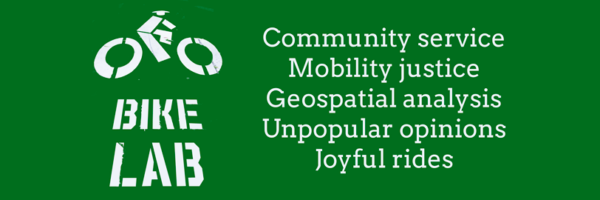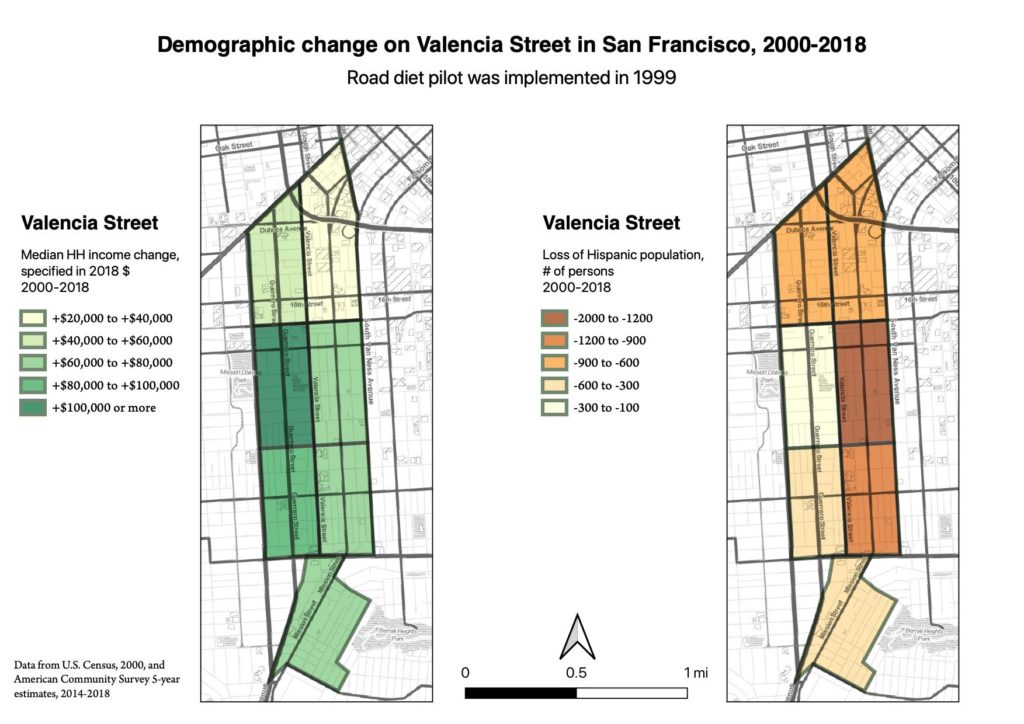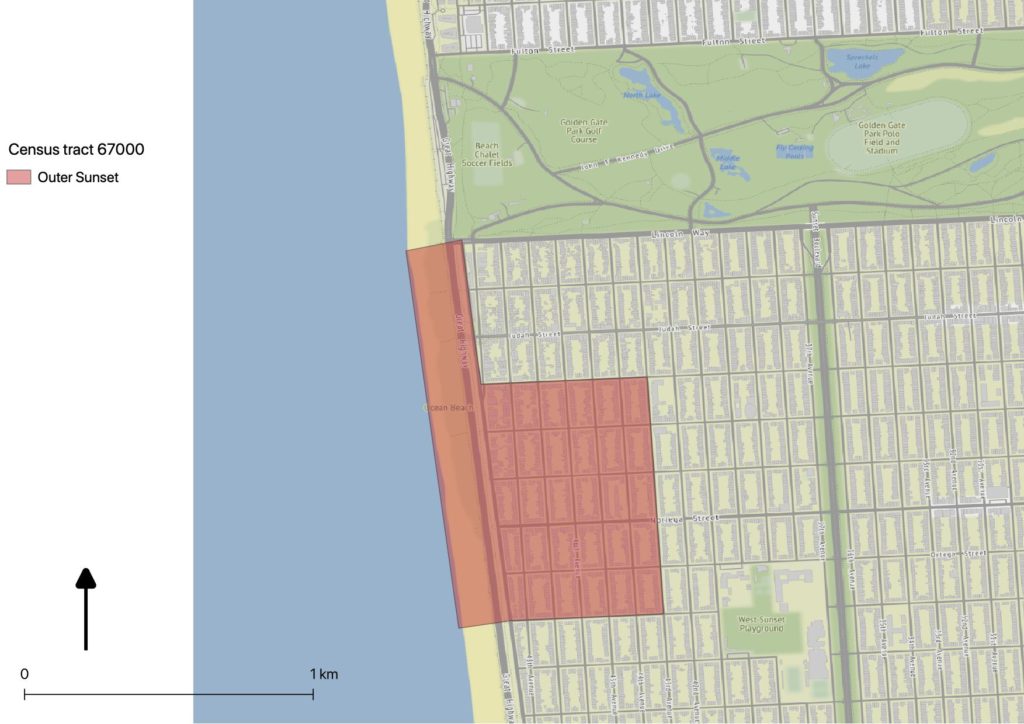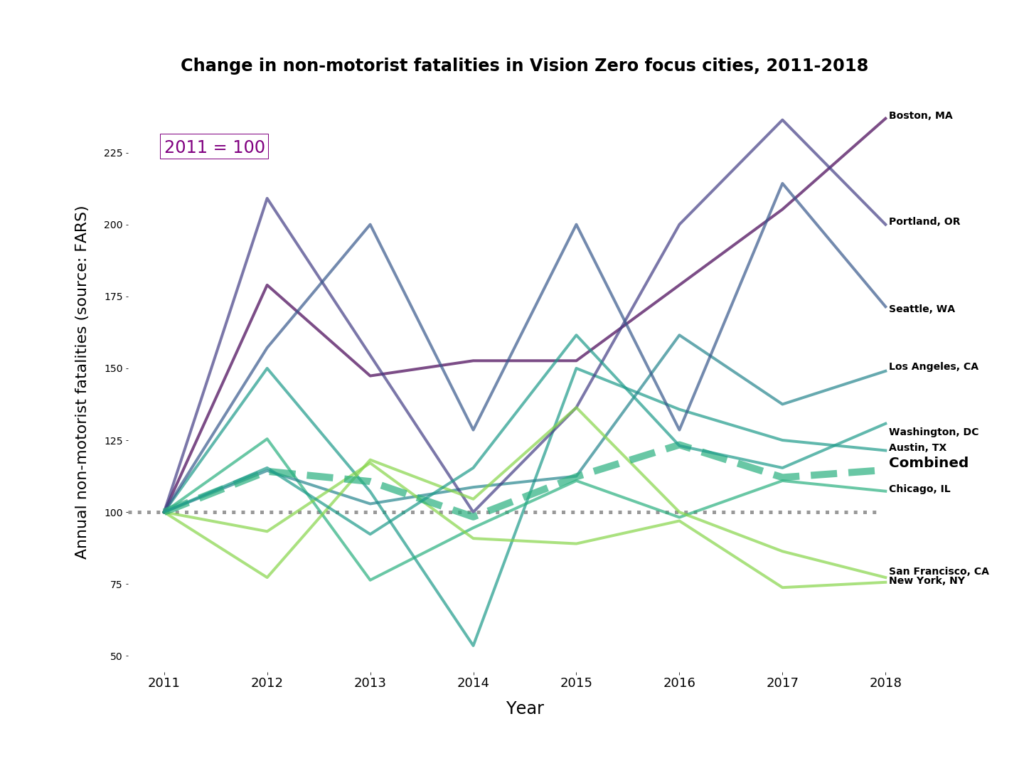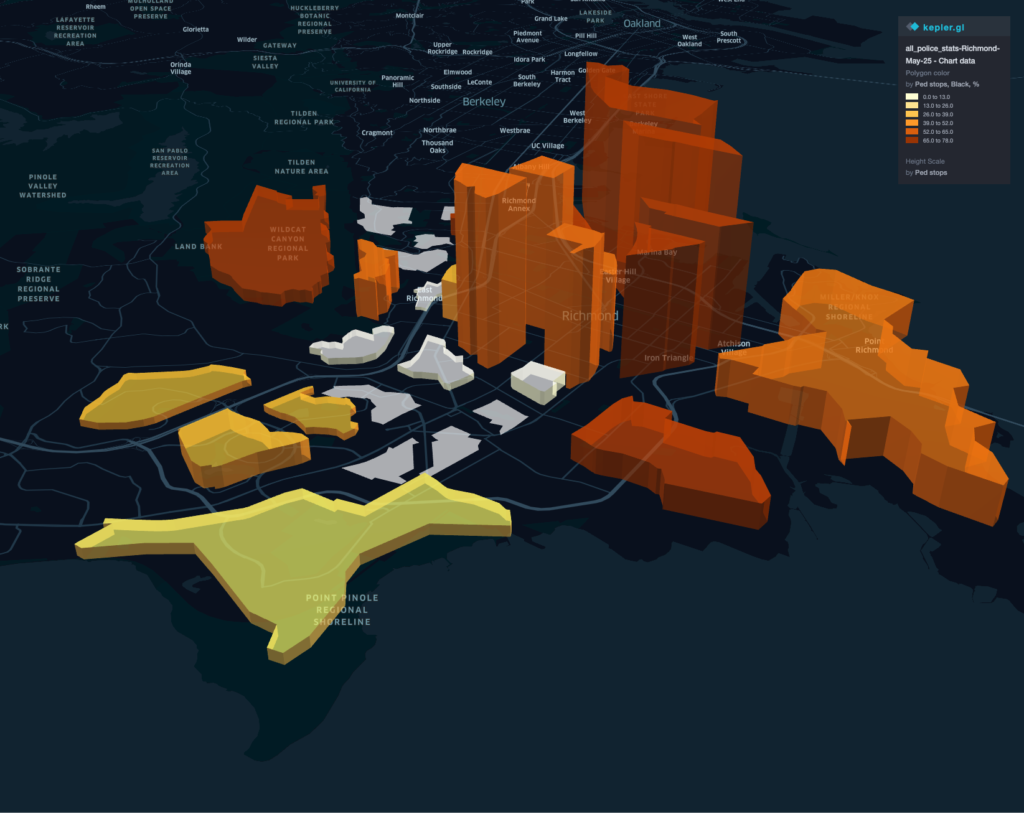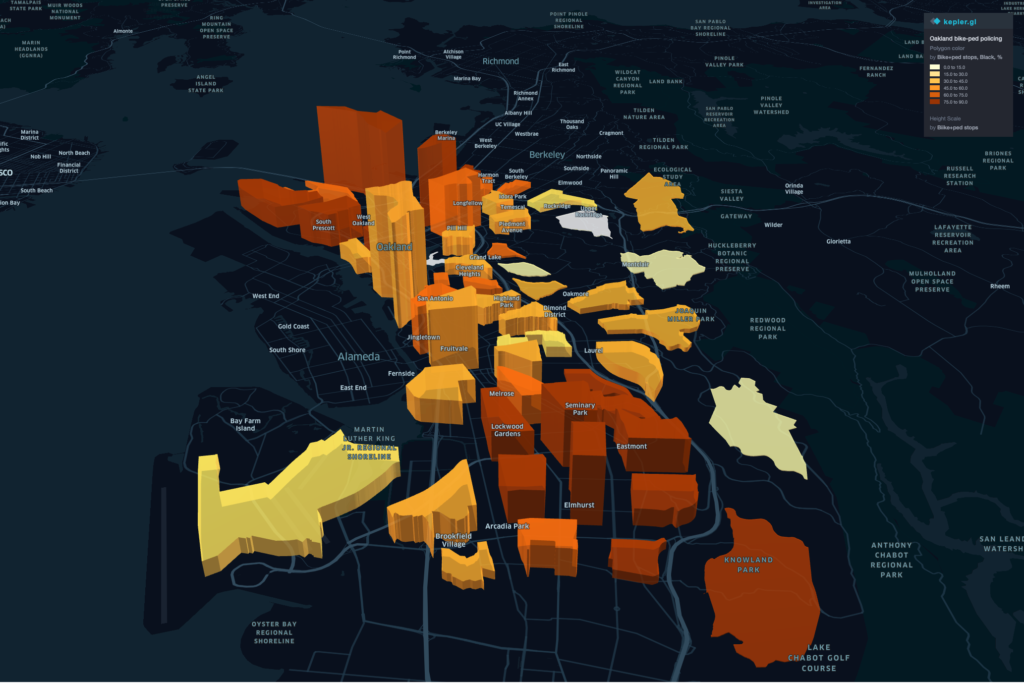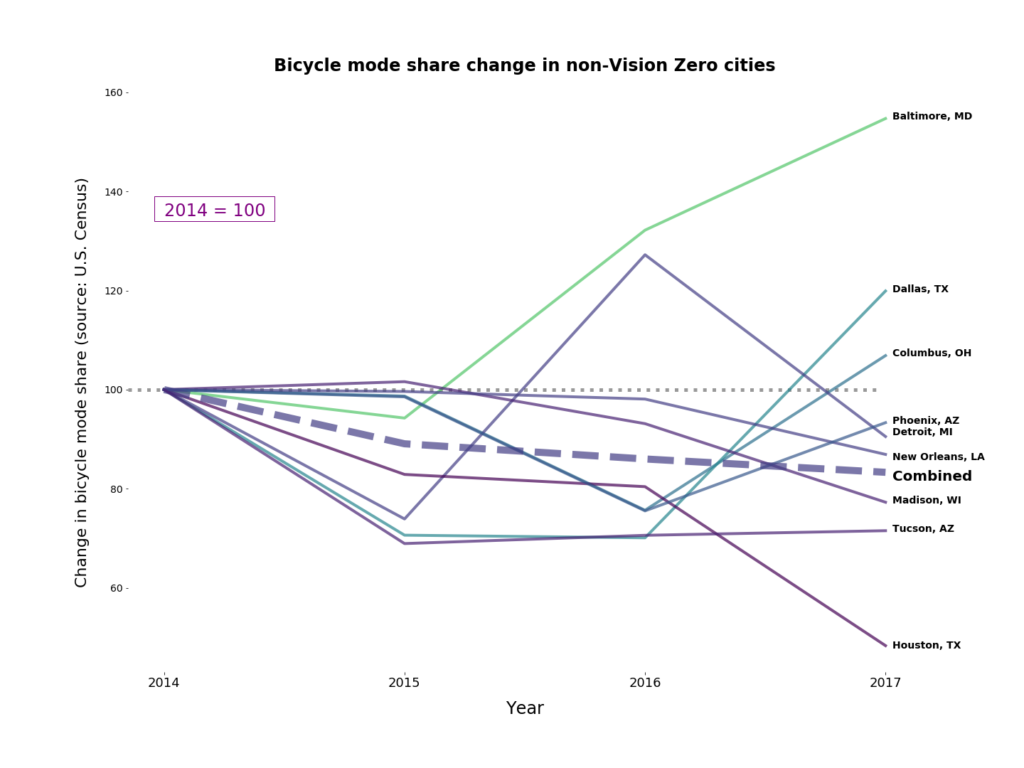Bike infrastructure and displacement
I have been really, really trying to avoid getting into the housing debate. But transportation and housing are inextricably linked, and my investigation of bike infrastructure’s relationship to gentrification is part of the Bike Lab’s work. A Twitter thread sparked by Phil Matier’s terrible SF Chronicle article led me to do some data analysis of Valencia Street’s transformation. Some of the results are pretty staggering.
